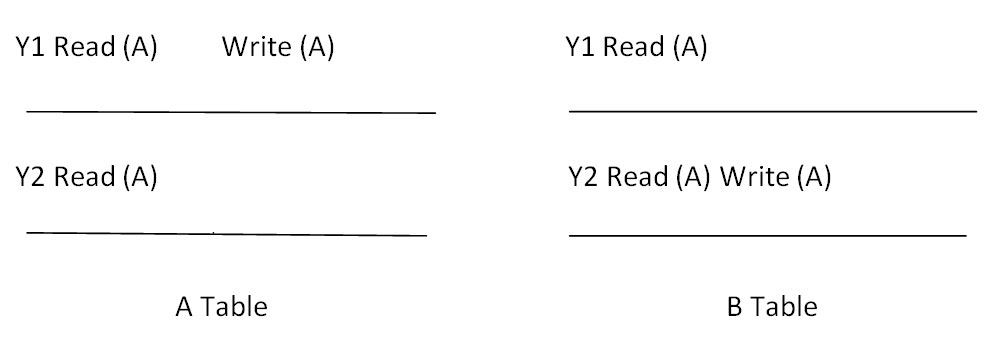What is Schedule in DBMS? Types, Advantages, Disadvantages: In DBMS, the schedule is the sequence following which the instruction of transactions will be performed. It is a process using which transactions are lined for execution. It ensures that the operations don’t get overlapped when numerous transactions are running concurrently.
Also See: What is Serializability in DBMS?
What is Schedule in DBMS? Types, Advantages, Disadvantages
This process times the transaction according to the requirement. We have received tons of requests from the viewers about a brief post regarding schedules. So, our team has created a full article about schedules on DBMS and other essential information. Please go through the complete post and understand what we are talking about.
Types of schedules in DBMS?
There are many two types of schedules in DBMS about which we will talk in detail below:
- Serial Schedule
A serial schedule can be defined as the transaction that takes place prior to the beginning of another transaction. It means the execution of a transaction won’t begin until the execution of an already running transaction doesn’t get completed. It is also known with the name of non-interleaved execution among the users.
Also See: DATA TYPES IN SQL
Let’s understand schedules in detail by the following example:
Think there are two transactions Y1 and Y2 in the system. A schedule having Y1 and Y2 will be serial if at least the following two conditions are fulfilled.
- All the operations of Y1 are performed before the execution of all the operations of Y2. Check out table A to have a better understanding.
- All the operations of Y2 are performed before the execution of all the operations of Y1. Check out the table B to have better understanding.
The serializable schedules are further divided into two categories we have mentioned in detail below:
- Conflict Serializable
A conflict serializable can be defined as a schedule that can be transformed into a serial schedule by exchanging non-conflicting operations. A set of operations can be considered conflicting when the following conditions are met:
==> They related with the different sets of transactions
==> These transactions are working on the same type of data item.
==> One of two transactions is a written operation.
- View Serializable Schedules
A view serializable is a schedule that is viewed similar to a serial schedule without any overlapping transactions. If the serializability includes blind writes, then the view serializable can’t be considered a conflict serializable.
Also See: What is data Extraction and Tools in DBMS?
- Non-Serial Schedule
If multiple transactions in operation are interleaved, then it is considered non-serial scheduling. There is a strong chance of concurrency issues. All the transactions in this process are performed in a non-serial manner that helps make the final result correct, so it becomes the same as the serial schedule.
In this type of schedule, one transaction doesn’t wait for the completion of another transaction. It is completely different from a serial schedule where one transaction only gets completed once the previous one is executed. A non-serial schedule doesn’t come with the advantage of
concurrent transactions. The non-serializable has two different types that we have mentioned below:
- Serializable
The main motive of this schedule type is to make sure the database stays consistent. It is utilized in non-serial scheduling for identifying whether there is any inconsistency in the schedule or not. That’s not all, you will only find a non-serial schedule in a serializable schedule when it is the same as the serial schedules in the system.
- Non-serializable
If you want to understand the non-serializable category better, it is essential to understand the two categories we have written below:
a. Recoverable Schedule
A recoverable schedule is considered a schedule where the transactions are committed once every transaction whose changes are read gets executed.
b. Non-recoverable Schedule
If the system doesn’t recover to a regular database state, it is considered a non-recoverable schedule.
Also See: Different Sql Functions With Examples
Advantages of Schedule in DBMS?
There are tremendous sorts of advantages offered by the schedules in DBMS about which we have written below:
- It allows numerous transactions to get performed concurrently without creating many issues.
- This technology is very useful in minimizing the operating costs to a greater level.
- They make sure the data consistency stays maintained all the time.
- Schedules offer a solid improvement in terms of response time and throughput.
Disadvantages of Schedule
If you believe that the schedules only come with advantages for the system, we suggest you think again as things are pretty different. Let’s look at the disadvantages of schedules in DBMS with proper explanation below:
- There are instances where the average waiting time increased to a considerable level in the system.
- The users may have to deal with tons of context switching in many cases.
Also See: Decomposition in DBMS? Types, Advantages, Properties, Issues
FAQs about schedule
How can cascading abortion be prevented?
The best thing to do is prevent a transaction from checking uncommitted modification from another one in the same line. It is a very effective strategy that works most of the time in DBMS.
What does durability term mean in DBMS?
The durability can be defined as the ACID property that makes sure the transactions should survive permanently.
Also See: Differences between SQL Vs MySQL in Tabular Form
Conclusion
We have provided important information about the schedule in DBMS to make sure everything gets cleared for the visitors. A schedule creates a sequence of operations that perform certain instructions on the database. What do you think about the schedules? Why don’t you write about it in the comment section?
